Most people might not think of South Dakota as a great location for photography, but they’d be wrong. If you visit the right places, at the right time of year, it offers lots of wonderful photo opportunities. In June I drove there to scout locations for a workshop, and then in late September returned with six people for four full days of photography. We started in Custer, splitting our time between Custer State Park, Four Mile Old West Town and Mount Rushmore. After that we moved to Wall, S.D. and filled the remaining days by exploring Badlands National Park. It went so well that I’m already planning a second workshop there next year. Here are some of the photos from this trip, and the stories that go along with them.

If you can’t find bison in Custer State Park’s Wildlife Loop, you’re not looking very hard. And while it’s unsafe (not to meniton illegal) to approach them on foot, when they’re right next to the road it’s easy to make photos like this from inside the safety of your car. Nikon Z 6 II, Aperture Priority, Sunny white balance, ISO 450, 1/500 at f/5.6 in Matrix metering, 0.0 EV, Nikkor VR 200-500mm f/5.6E lens at 290mm.
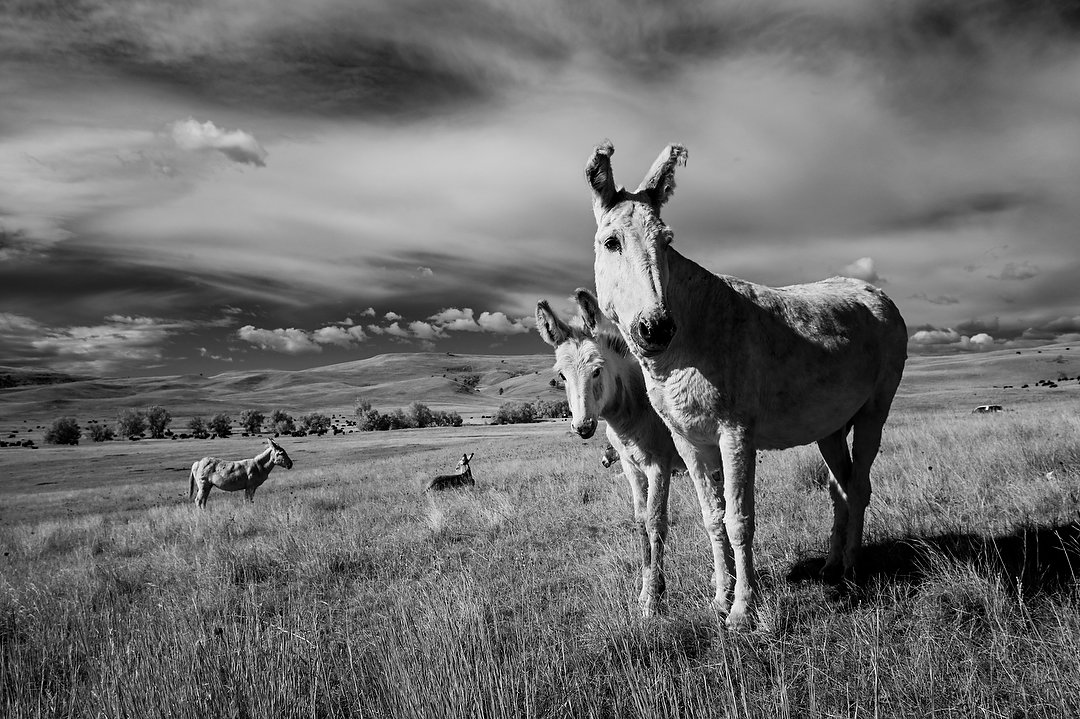
Custer State Park also has a resident group of wild burros, and since so many people feed them, they’re not at all afraid of people. Here I chose to use my full-spectrum camera for an infrared black-and-white. Nikon Z 6, Aperture Priority, Preset white balance, ISO 100, 1/1000 at f/10 in Matrix metering, -0.7 EV, Nikkor Z 14-30mm f/4 S lens at 24mm.
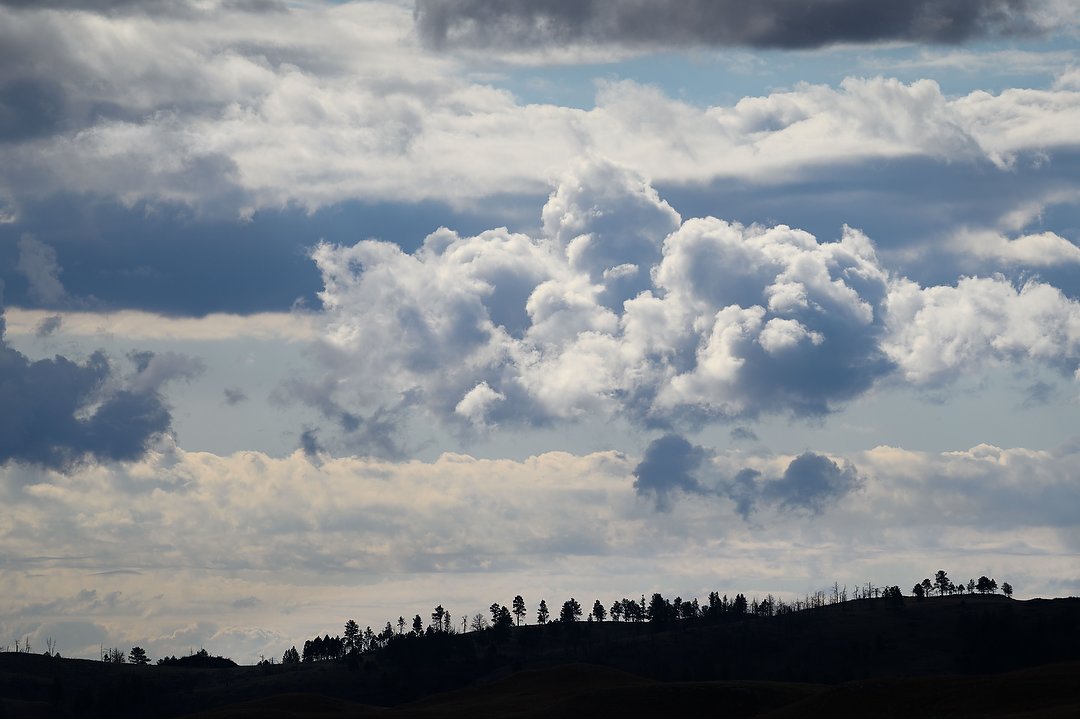
During our time in Custer, several storms passed through, which gave us some great skies to work with. Nikon Z 6 II, Aperture Priority, Sunny white balance, ISO 100, 1/2000 at f/5.6 in Matrix metering, 0.0 EV, Nikkor VR 200-500mm f/5.6E lens at 310mm.
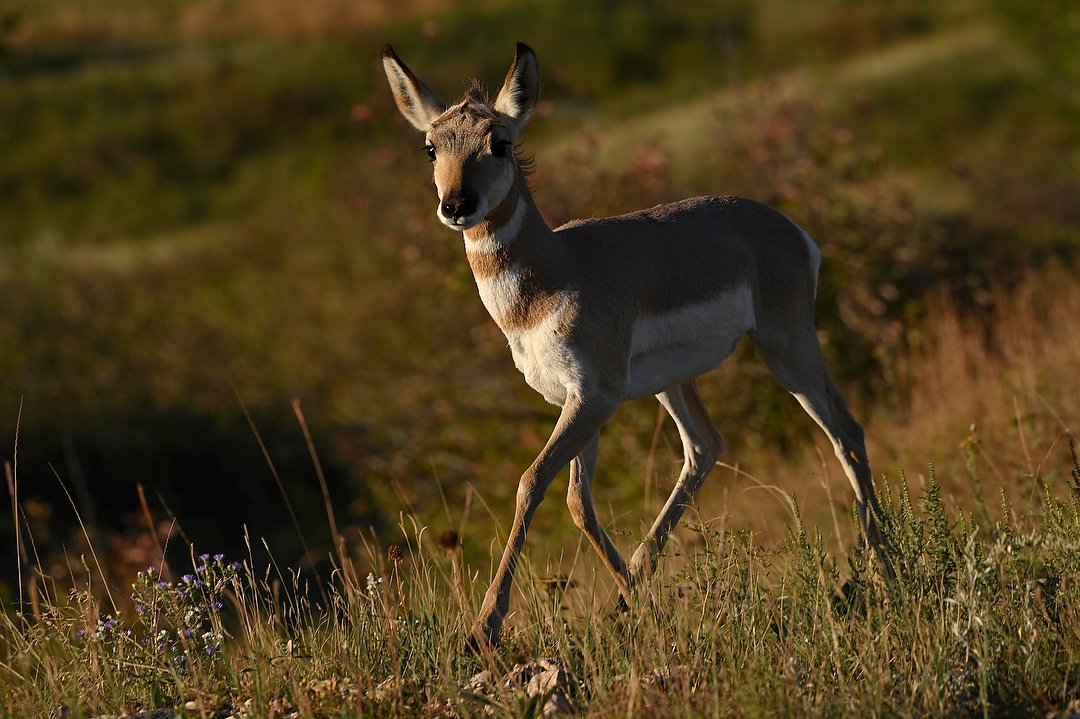
It’s common to find pronghorn in Custer State Park, and early morning light plus a clean (non-distracting) background made for a great setting for this young one trotting by us. Nikon Z 6 II, Aperture Priority, Sunny white balance, ISO 200, 1/1250 at f/5.6 in Matrix metering, -1.0 EV, Nikkor VR 200-500mm f/5.6E lens at 240mm.
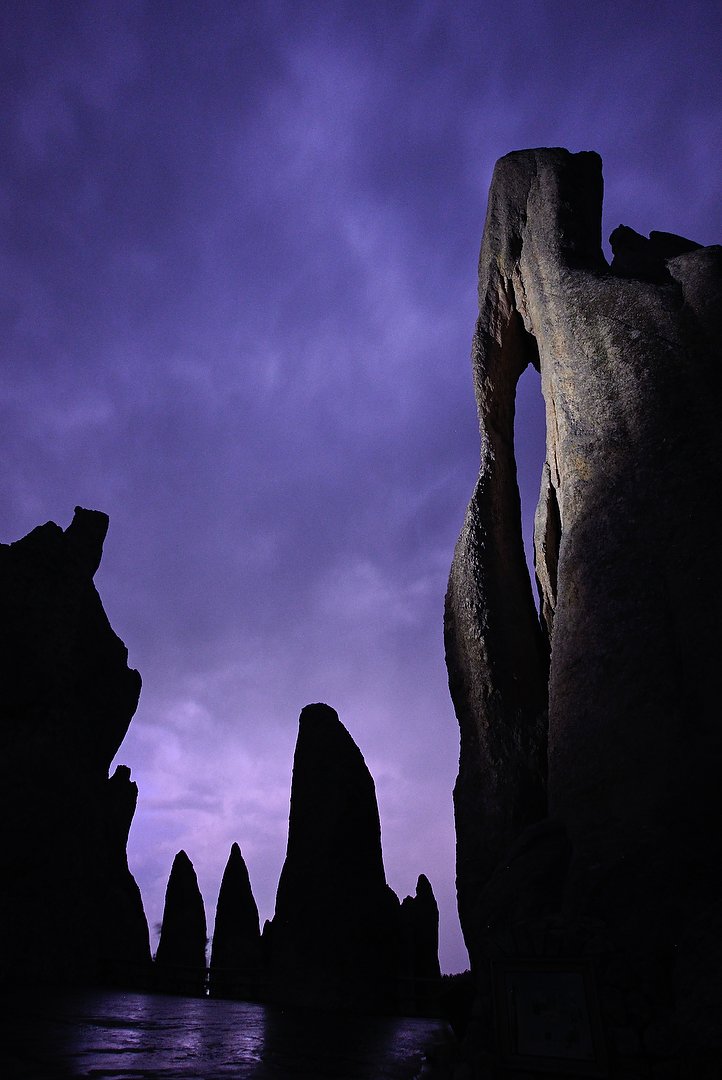
Needle’s Eye is near Sylvan Lake, is a fun place to do a night shoot. Heavy rain passed through while we were there, so we took turns ducking in and out of our cars to photograph it, lit with one Lume Cube. Occasional lightning in the distance helped light the night sky. Nikon Z 6, Manual exposure, Sunny white balance, ISO 3200, 4-seconds at f/4, Nikkor Z 14-30mm f/4 S lens at 18mm.
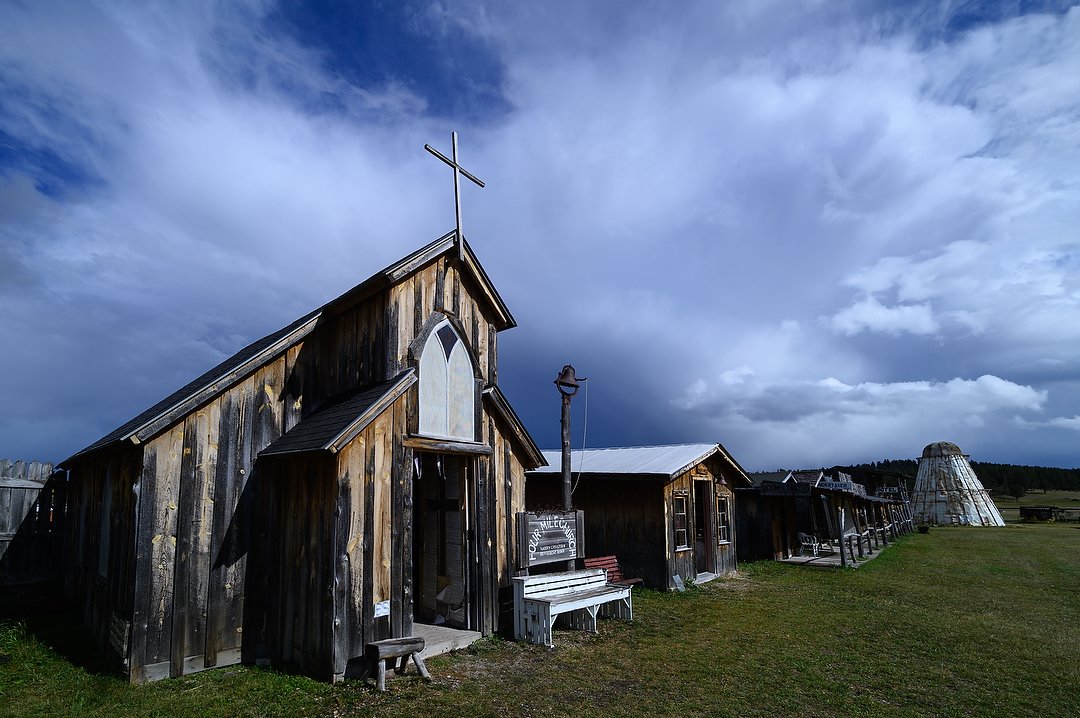
When we first arrived at Four Mile Old West Town, the skies opened up and we took shelter inside during a hail storm. But it was worth it, as the sun then came out and gave us great light and skies to work with. Nikon Z 6, Aperture Priority, Natural auto white balance, ISO 100, 1/800 at f/8 in Matrix metering, -0.7 EV, Nikkor Z 14-30mm f/4 S lens at 14mm.
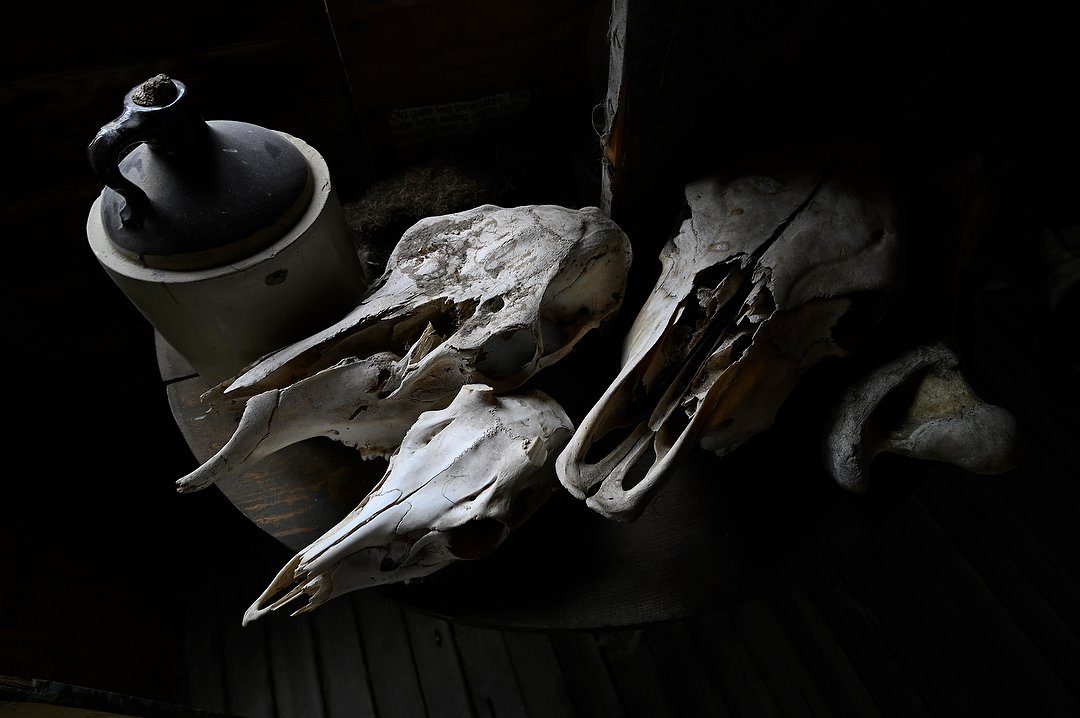
Most of the old buildings at Four Mile Old West Town are open, and you can find some great still life’s in the exhibits inside. Nikon Z 6, Aperture Priority, Natural Auto white balance, ISO 400, 1/13 at f/6.3 in Matrix metering, -0.7 EV, Nikkor Z 14-30mm f/4 S lens at 20mm.

It was amazing how well Mount Rushmore showed up against the night sky before it was even lit. The illumination here is just from the program being presented in the amphitheater below. After they turned on the spotlights, it was impossible show the star-filled sky. Nikon Z 6 II, Manual exposure, Auto white balance, ISO 1250, 20-seconds at f/5.6 in Matrix metering, -0.7 EV, Nikkor Z 24-200mm f/4-6.3 VR lens at 28mm.
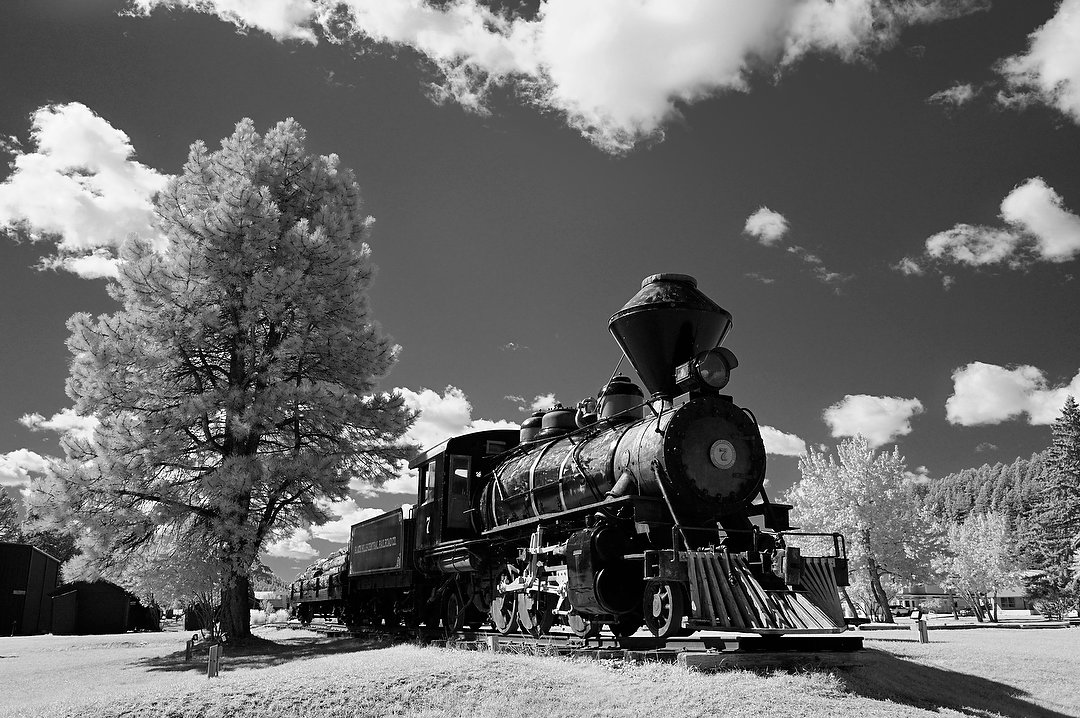
On our way to the Badlands from Custer, we stopped to visit the 1880 Train exhibit in Hill, SD. Another good opportunity for me to use my infrared for an old-fashioned looking black-and-white photo. Nikon Z 6, Aperture Priority, Preset white balance, ISO 200, 1/250 at f/9 in Matrix metering, +2.0 EV, Nikkor Z 14-30mm f/4 S lens at 30mm.
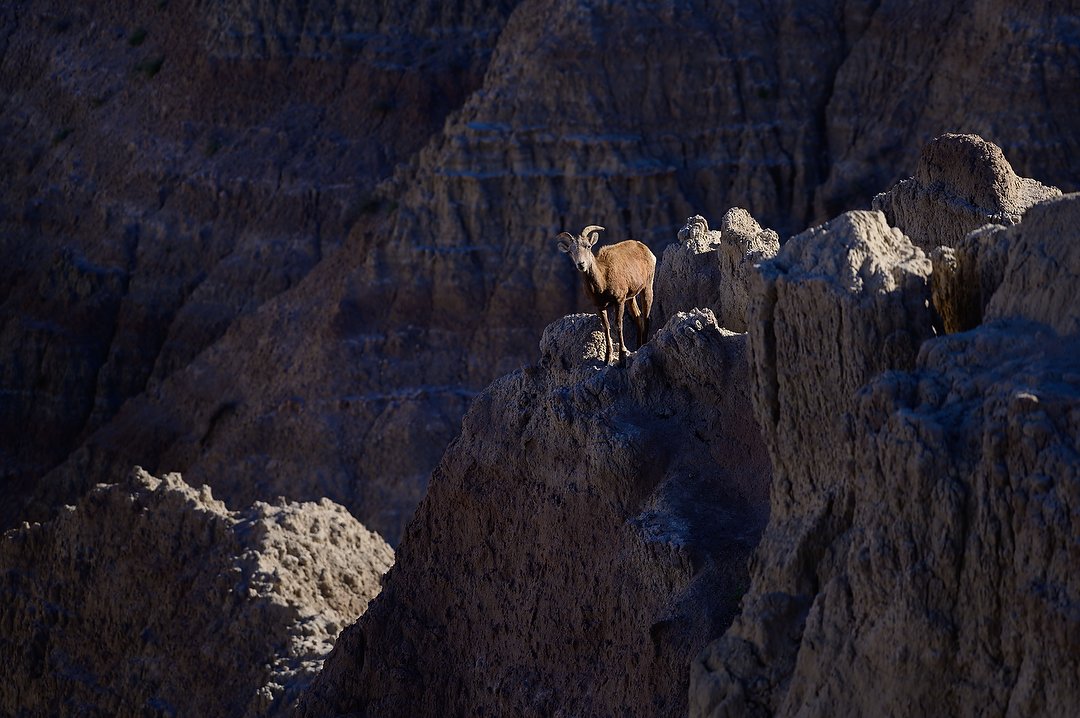
We found this bighorn sheep on a sunlit perch after only being in Badlands National Park for about ten minutes. TheyÕre common in the park, but often found early and late in the day. The trick is finding them in a good spot, with good light. Nikon Z 6 II, Aperture Priority, Sunny white balance, ISO 200, 1/800 at f/5.6 in Matrix metering, -1.3 EV, Nikkor VR 200-500mm f/5.6E lens at 250mm.
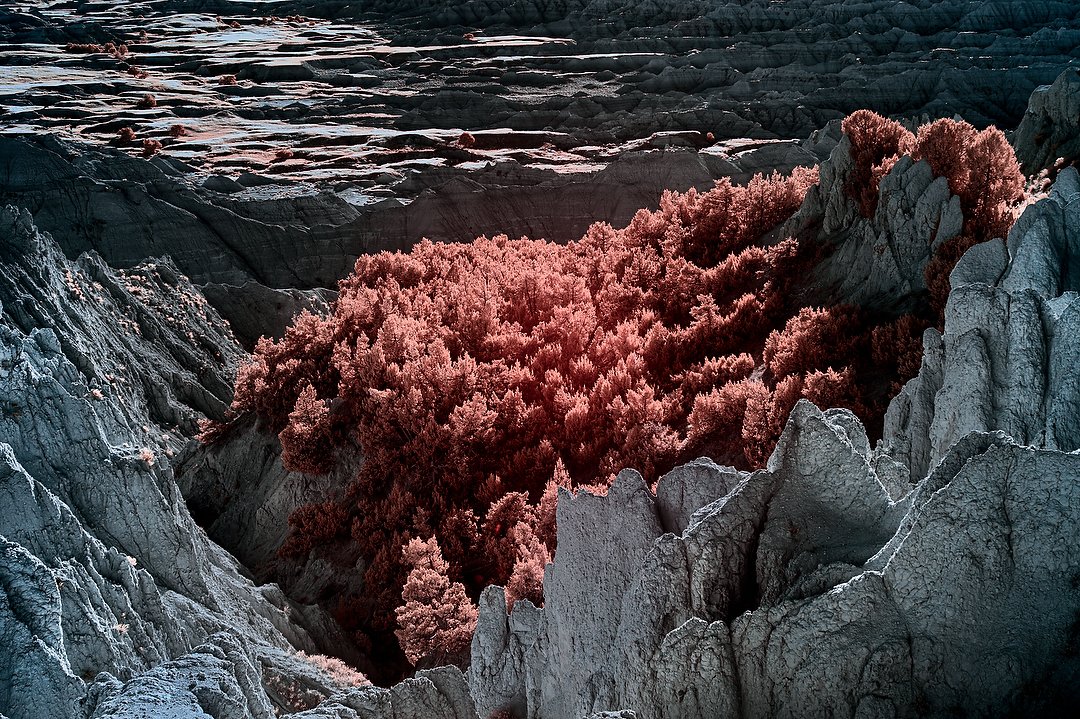
We spent our first sunset at Pinnacles Overlook, and with a grove of green pine trees below, I knew a color infrared image would make an arresting picture. Nikon Z 6, Aperture Priority, Preset white balance, ISO 100, 1/100 at f/8 in Matrix metering, +1.0 EV, Nikkor Z 24-200mm f/4-6.3 VR lens at 52mm.
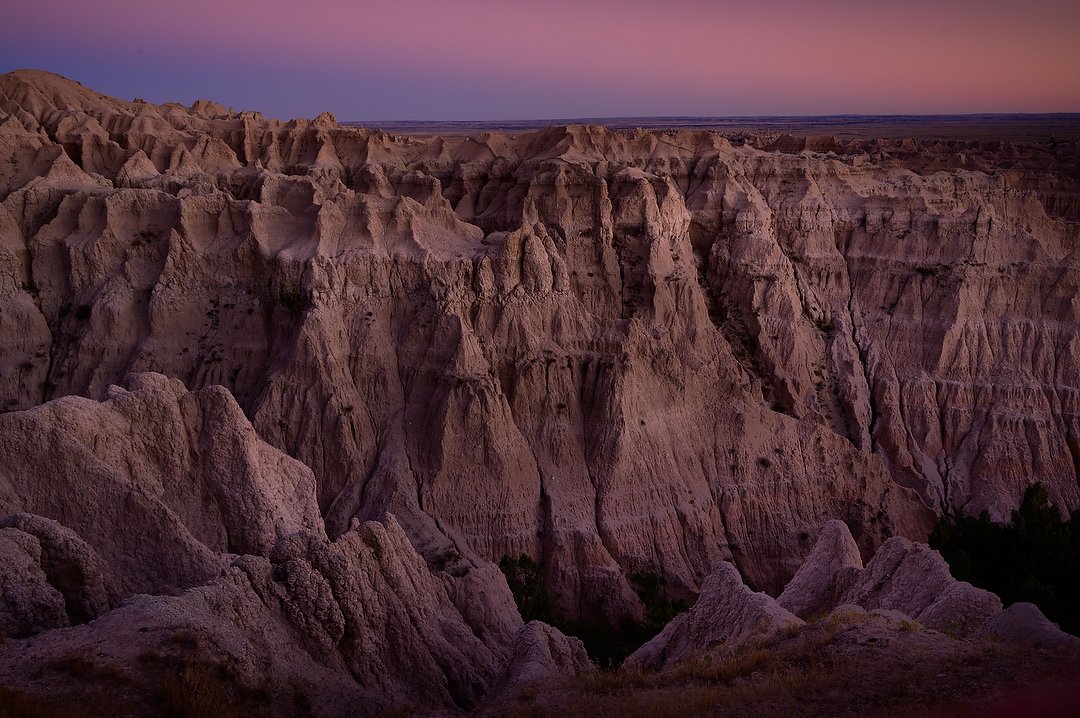
Fading sunset light at Pinnacles Overlook. I always try to remind my groups that what we want from sunsets is the color of light, not necessarily a picture of the sun dropping down into the horizon. That light will soften after the sun sets, and be great to work with, especially in the opposite direction of the sunset. Nikon Z 6 II, Aperture Priority, Fluorescent Mercury white balance, ISO 100, 1/3 at f/10 in Matrix metering, -1.3 EV, Nikkor Z 24-200mm f/4-6.3 VR lens at 29mm.
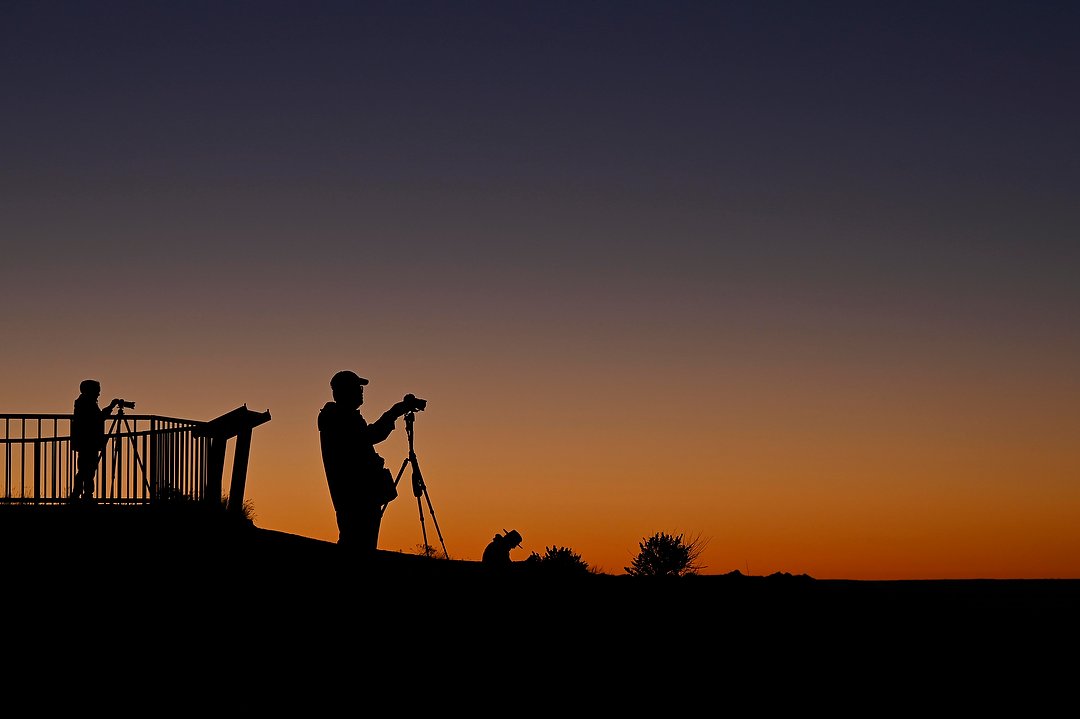
Another nice sunrise, for our first morning in Badlands, at Big Badlands Overlook. Nikon Z 6 II, Aperture Priority, Sunny white balance, ISO 320, 1/30 at f/8 in Matrix metering, -1.3 EV, Nikkor Z 24-200mm f/4-6.3 VR lens at 83mm.
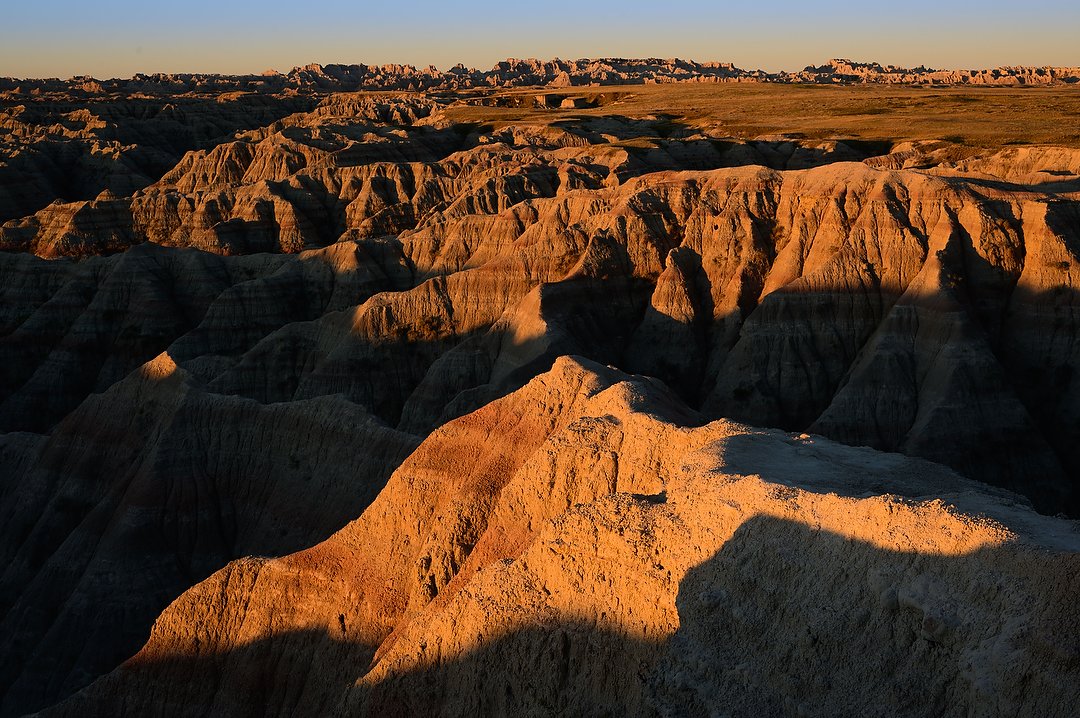
As the sun rose at Big Badlands Overlook, it slowly lit the formations in the west from the top down. Again, it’s really the shadows that make the picture. Nikon Z 6 II, Aperture Priority, Cloudy white balance, ISO 100, 1/40 at f/11 in Matrix metering, 0.0 EV, Nikkor Z 24-200mm f/4-6.3 VR lens at 44mm.
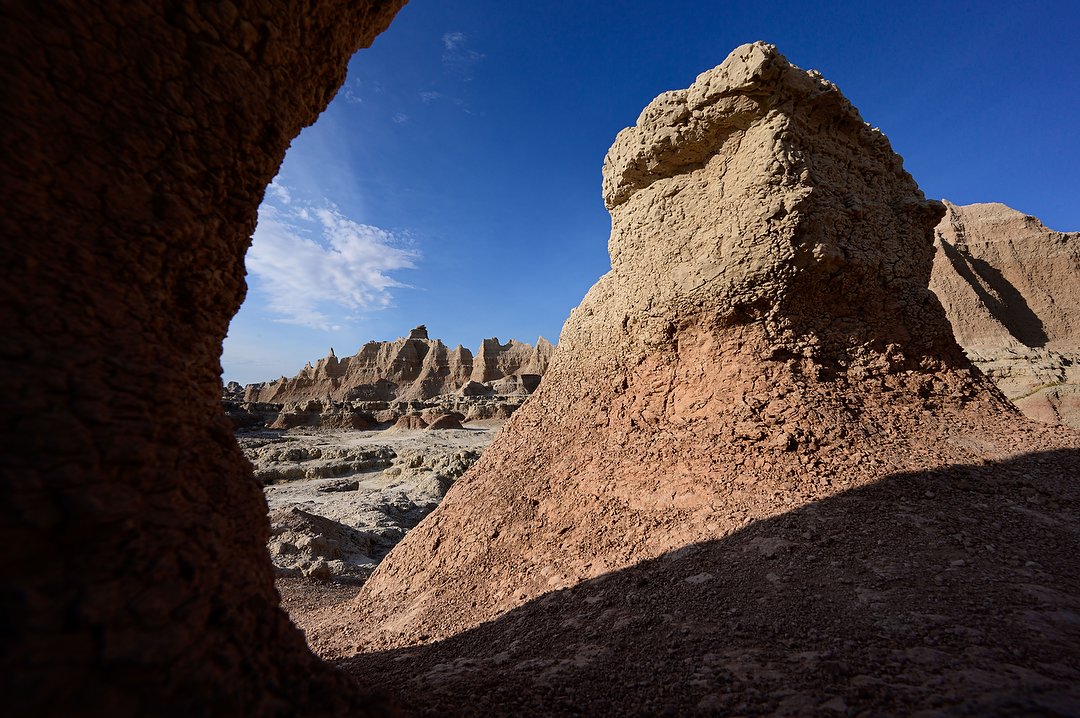
The Door Trail is one of my favorite spots to explore in Badlands because you can get out and among the formations. That lets me do things like this, getting the camera low and using the shadows as framing elements. Nikon Z 6 II, Aperture Priority, Sunny white balance, ISO 200, 1/200 at f/16 in Matrix metering, -0.3 EV, Nikkor Z 14-30mm f/4 S lens at 14mm.
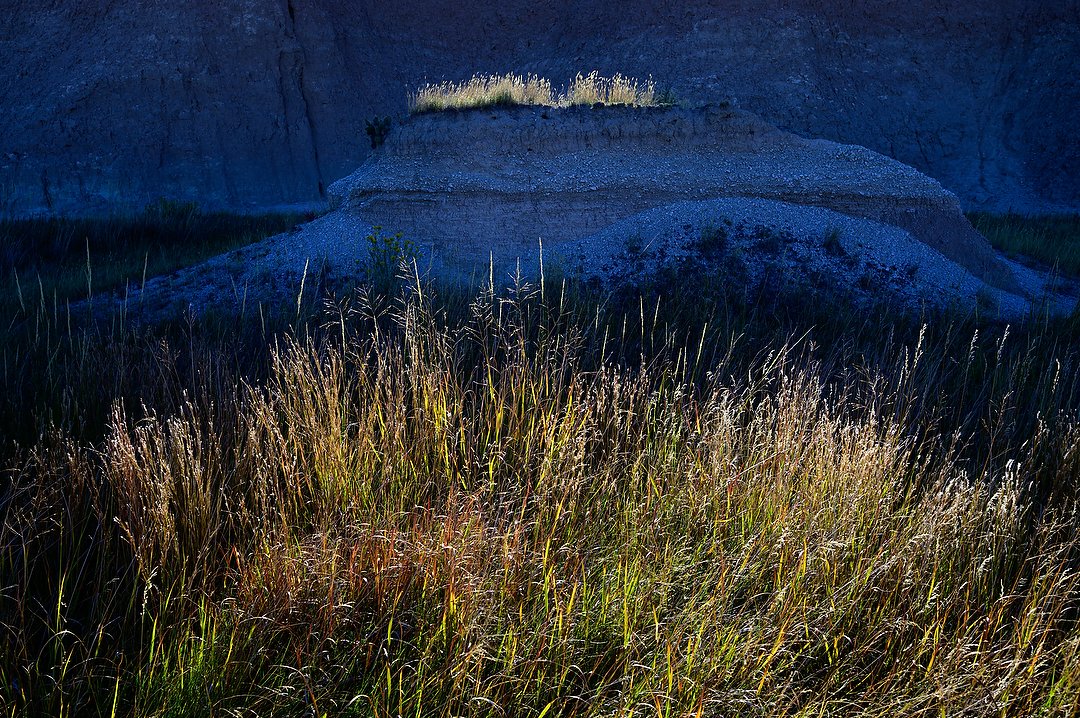
It’s easy to get so focused on the unusual formations in the Badlands that you forget there are other nice photos to be made as well. I found this along the boardwalk while walking back to the car from one of the trails. Nikon Z 6, Aperture Priority, Sunny white balance, ISO 100, 1/160 at f/8 in Matrix metering, -1.3 EV, Nikkor Z 14-30mm f/4 S lens at 27mm. #Instagood #photooftheday #nikonlove #justgoshoot #exploretocreate #visualsoflife #passionpassport #createexplore #earthfocus #landscape #landscapephotography #landscapecaptures #natgeotravel #photographyworkshop #kansascityphotographer #reedhoffmannphotography #landscapelovers #instalandscape #landscape_hunter #landscape_specialist #learnphotography #worldwithoutborders #southdakota #badlandsnationalpark #backlight
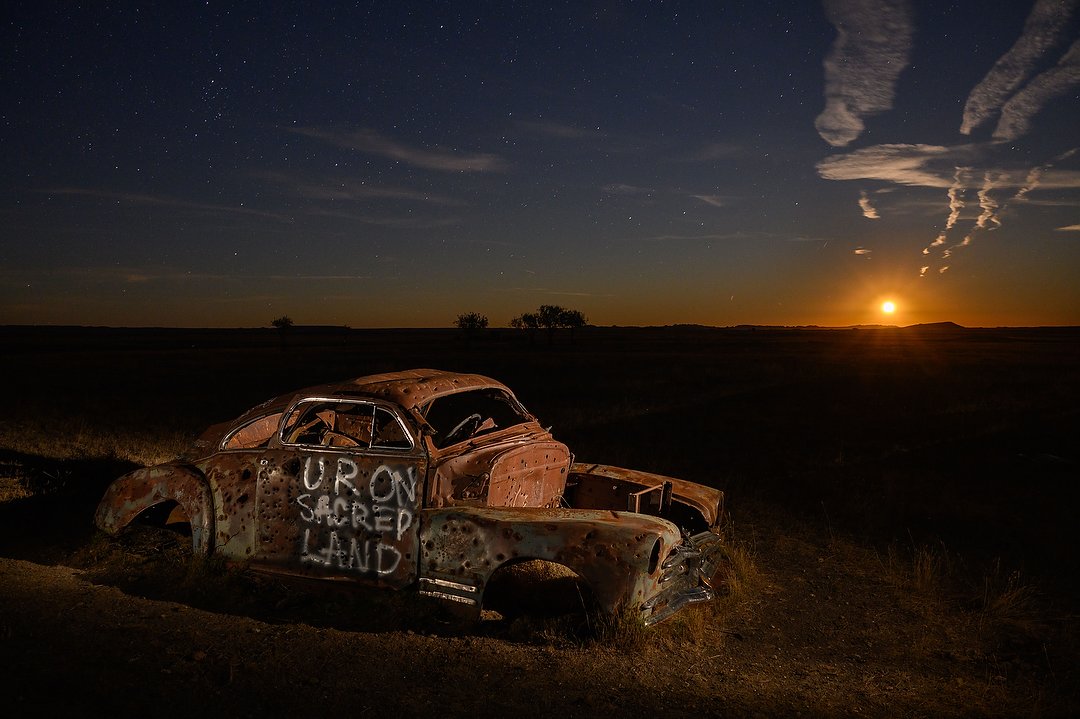
You can also some nice pictures at night, even outside the park. This is a spot I found during my June trip, and brought the group there for a little light painting with a pair of Lume Cubes. The rising moon was a bonus! Nikon Z 6 II, Manual, Sunny white balance, ISO 1000, 20-seconds at f/6.3 in Matrix metering, 0.0 EV, Nikkor NIKKOR Z 24-200mm f/4-6.3 VR lens at 25mm.
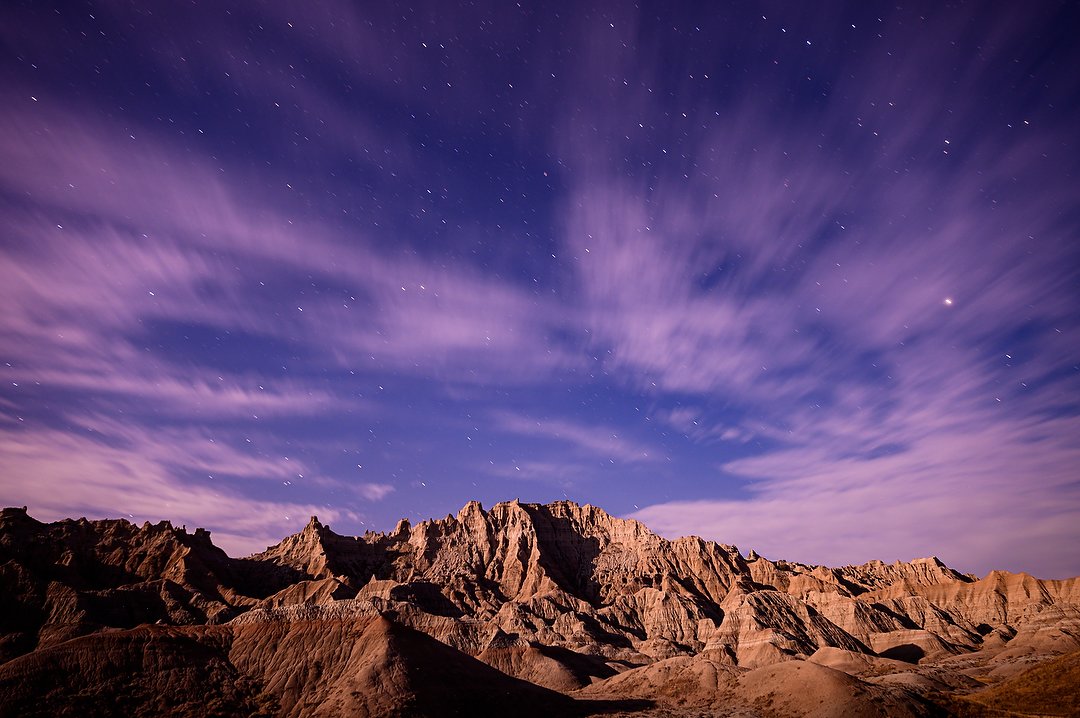
I don’t mind the moon being up at night when I’m leading a workshop, because it can light up the surround landscape and offer us some nice opportunities for photos, like this. Nikon Z 6, Manual exposure, 3400K white balance, ISO 400, 62-seconds at f/4, Nikkor Z 24-70mm f/2.8 S lens at 25mm.
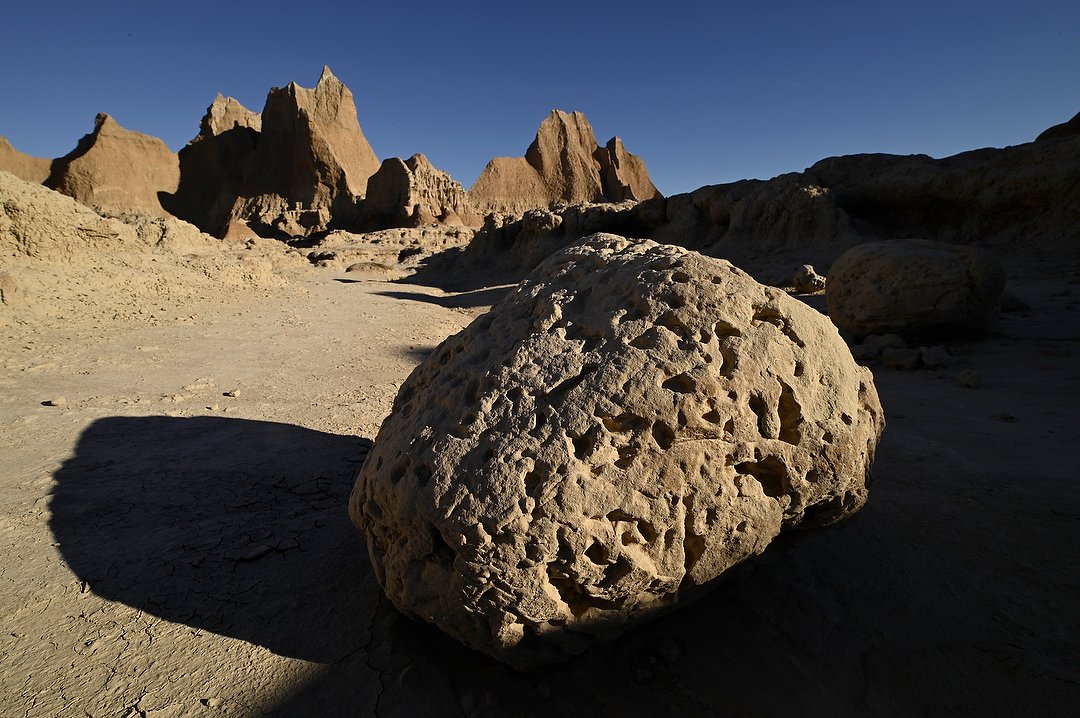
Another scene from one of the visits to the Door Trail, putting my camera down near ground level and taking advantage of the shadows once more. Nikon Z 6, Aperture Priority, Shade white balance, ISO 100, 1/80 at f/18 in Matrix metering, -0.7 EV, Nikkor Z 14-30mm f/4 S lens at 16mm.
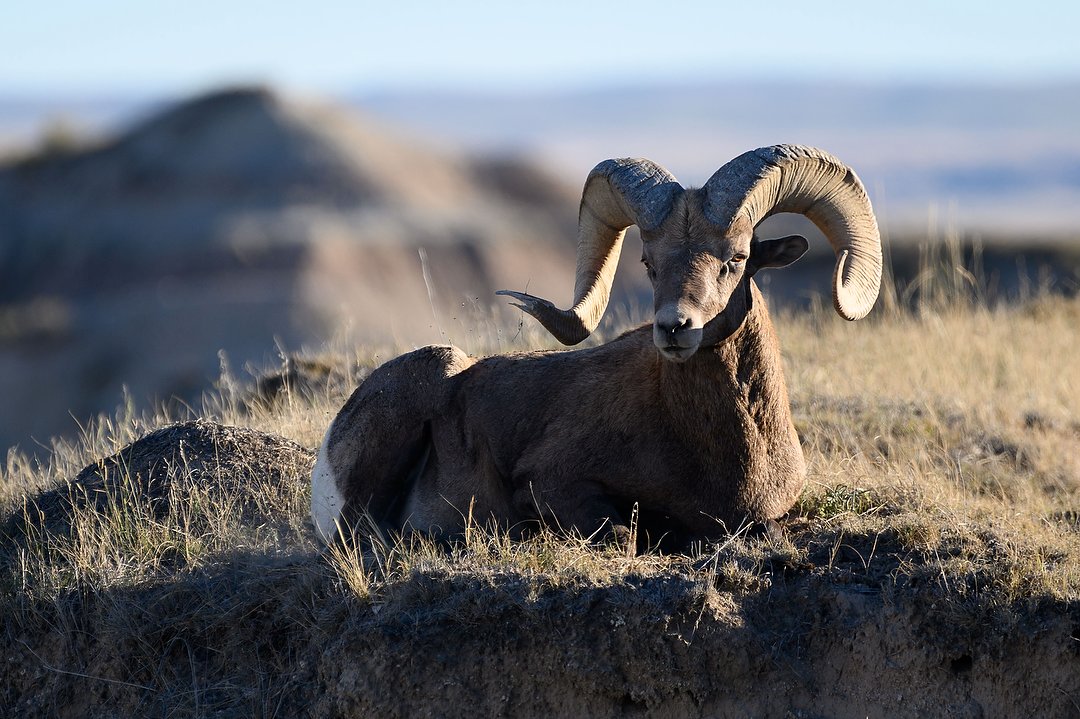
As I mentioned before, there are a lot of bighorn sheep in Badlands, but finding a male with a nice set of horns, in a good location, with good light, makes for a special moment. And it’s also why I recommended to the group that they bring a long telephoto. Nikon Z 6 II, Aperture Priority, Sunny white balance, ISO 320, 1/1000 at f/5.6 in Matrix metering, -0.3 EV, Nikkor VR 200-500mm f/5.6E lens at 500mm.

This is exactly the kind of soft, post-sunset light you hope to get in South Dakota’s Badlands. That evening we were at Yellow Domes, a popular sunset location because of the color found there. Nikon Z 6, Aperture Priority, Shade white balance, ISO 200, 4-seconds at f/11 in Matrix metering, -0.3 EV, Nikkor Z 14-30mm f/4 S lens at 14mm.
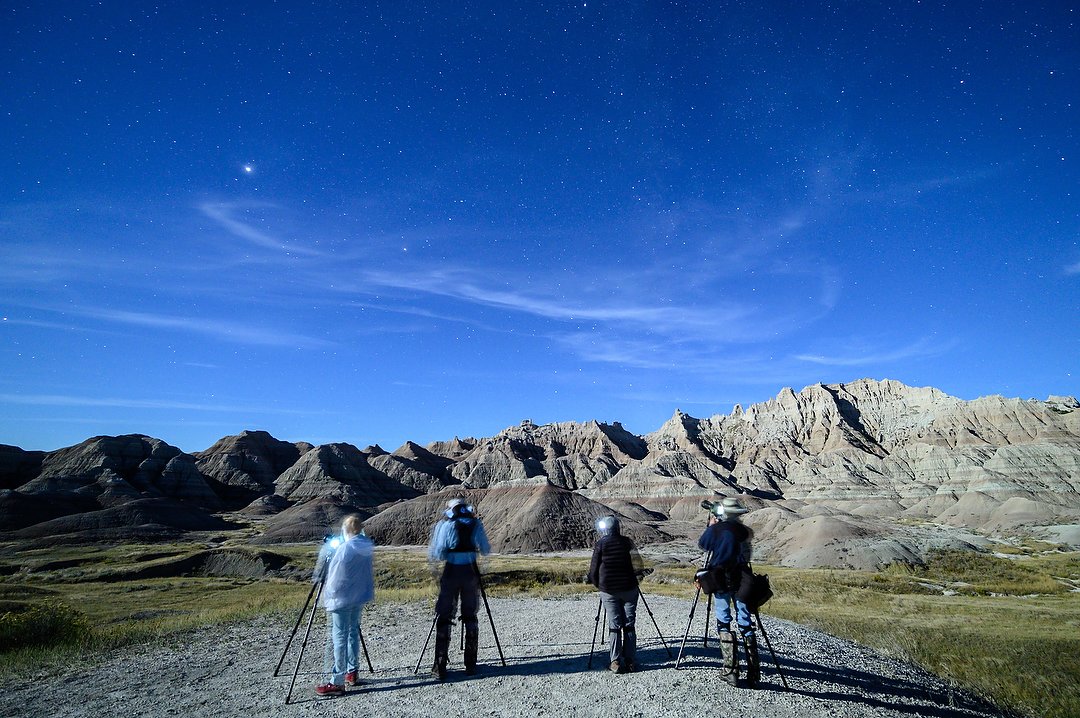
Part of my group during one of our night landscape shoots, taking advantage of the moonlight. Nikon Z 6, Manual exposure, 3400K white balance, ISO 3200, 20-seconds at f/4, Nikkor Z 14-30mm f/4 S lens at 16mm.
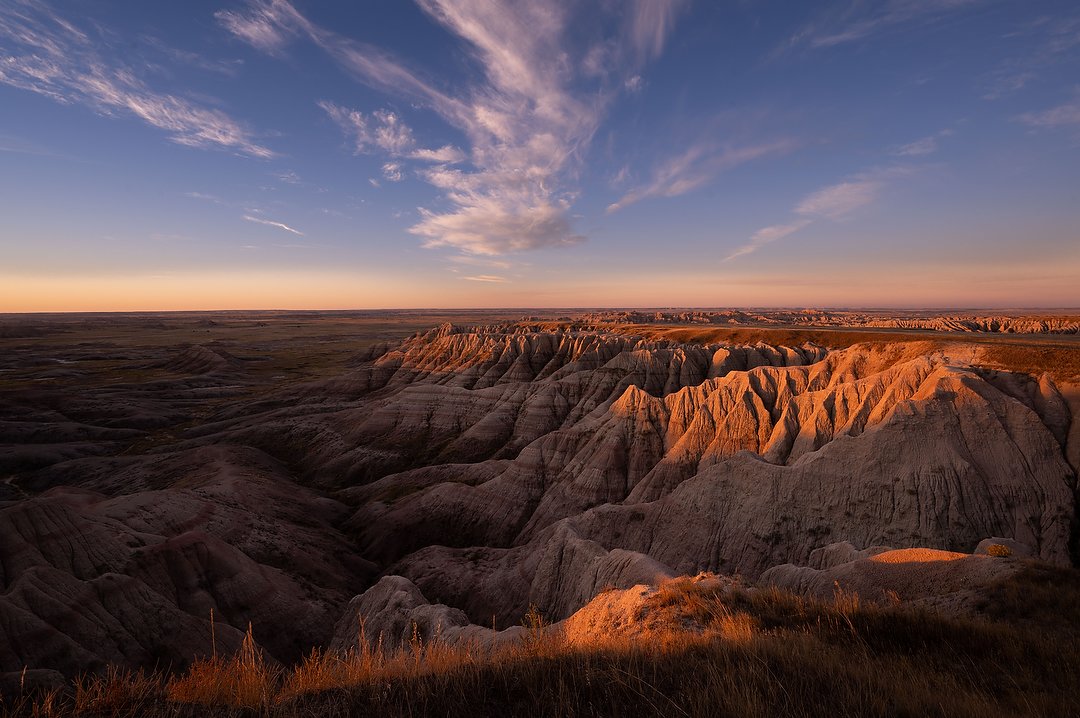
And more great light, this time at sunrise, on the last morning of the workshop. This was from Panorama Point. Nikon Z 6 II, Aperture Priority, Shade white balance, ISO 100, 1/30 at f/11 in Matrix metering, -1.0 EV, Nikkor Z 14-30mm f/4 S lens at 17mm.
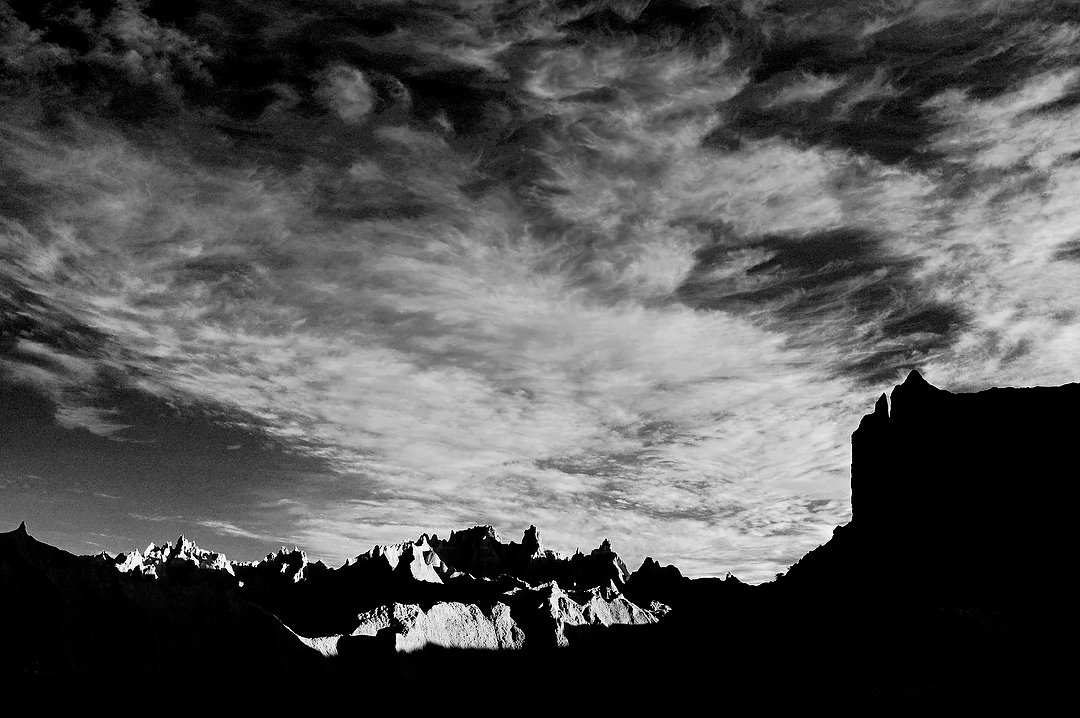
Another spot I really like, after sunrise, is near the Fossil Exhibit area. With that sky and some strong shadows, I again opted for a black-and-white with my full-spectrum camera. Nikon Z 6, Aperture Priority, Preset white balance, ISO 100, 1/125 at f/8 in Matrix metering, +2.0 EV, Nikkor Z 14-30mm f/4 S lens at 30mm.
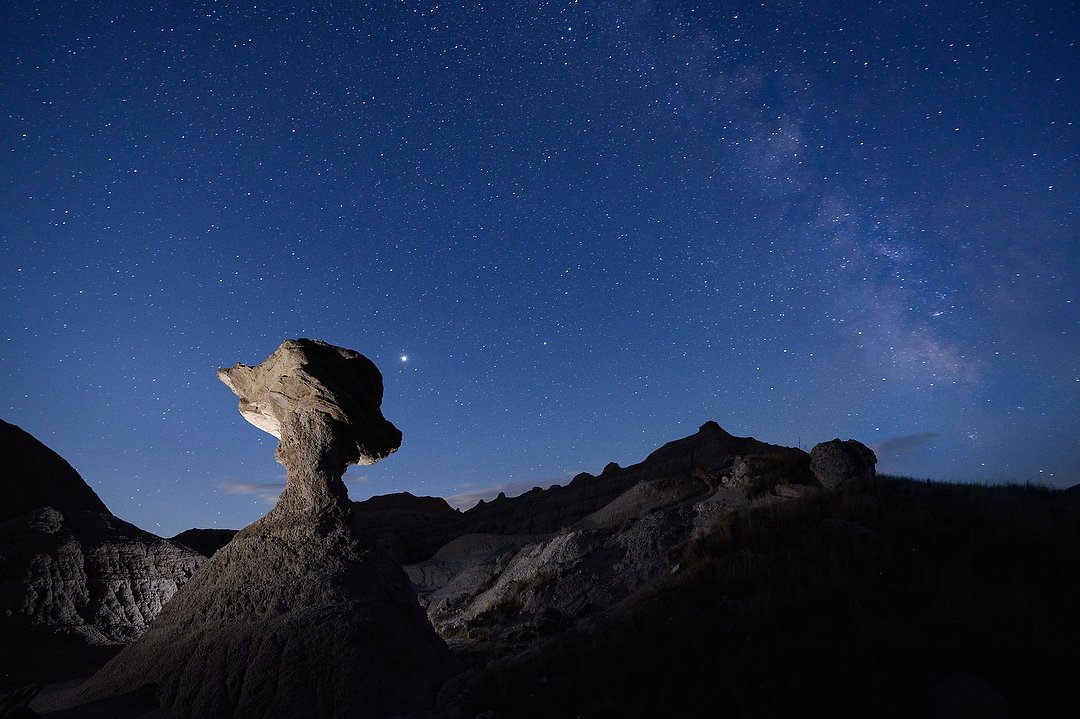
I always try to end my workshops with something special, so in the Badlands I took them to a neat little rock formation called “The Toadstool.” Lit with two Lume Cubes, it paired nicely with an appearance by the Milky Way. Nikon Z 6 II, Manual exposure, 3800K white balance, ISO 4000, 30-seconds at f/4, Nikkor Z 14-30mm f/4 S lens at 15mm.
(You can view the whole gallery of photos from this workshop here. Want to join me in 2022? Send an email and I’ll add you to the “interested” list. And if you like this story, please share it with your friends and let them know about the links on photography that I post on my business Facebook page. I’m also on Instagram and Twitter, @reedhoffmann. And if you’re curious about the workshops I teach, you can find them here. And, you can subscribe to this blog on my home page.)

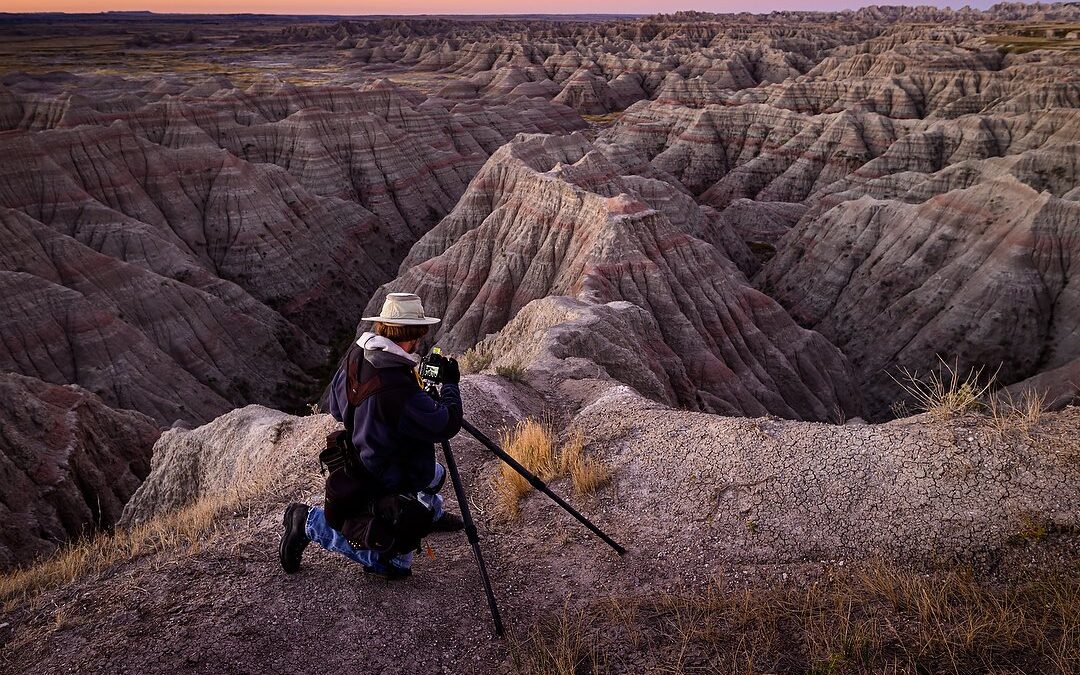
Great images!